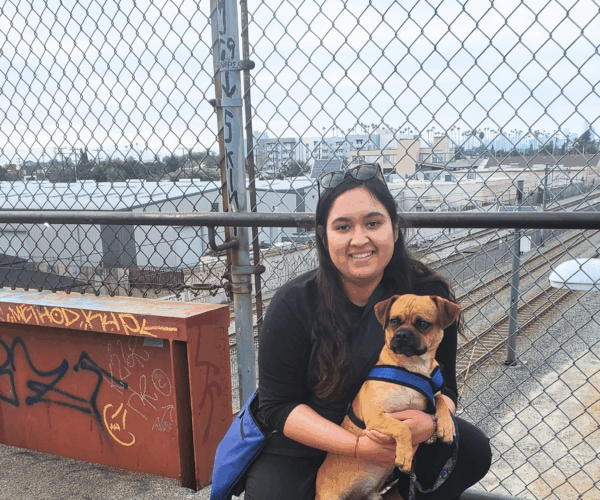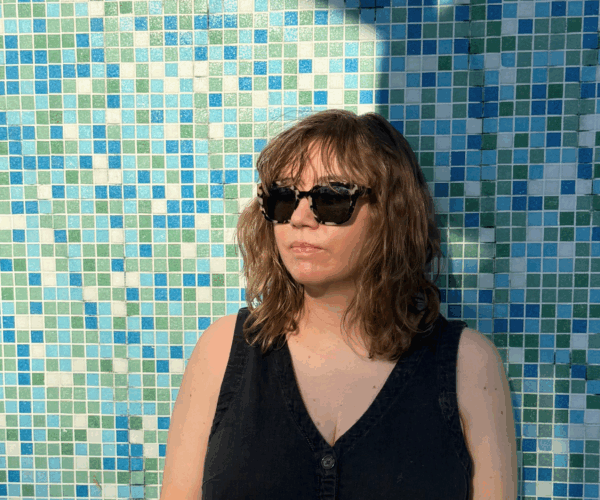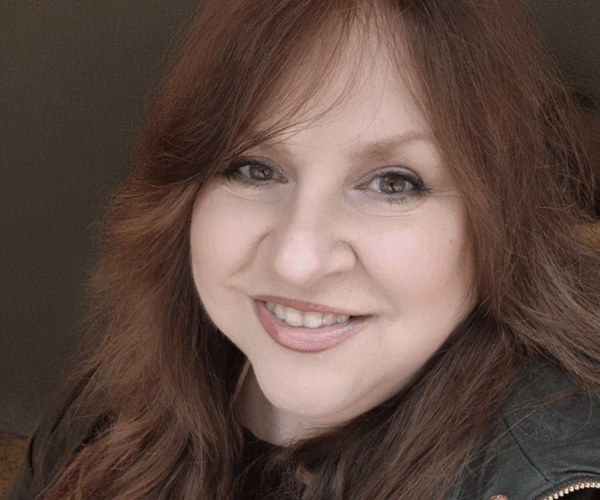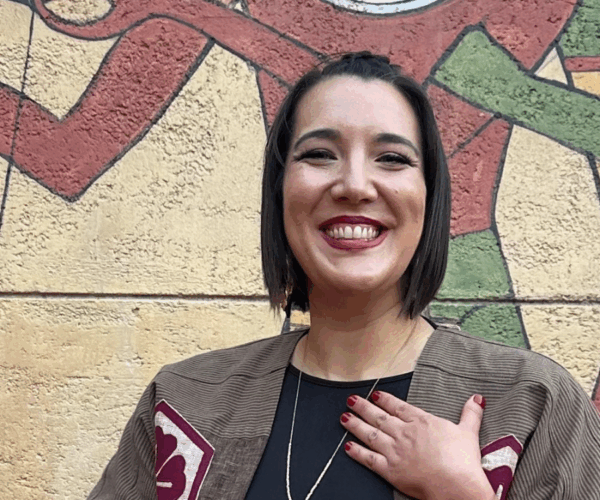Boot Camp Graduate: Markos Felix-Martinez
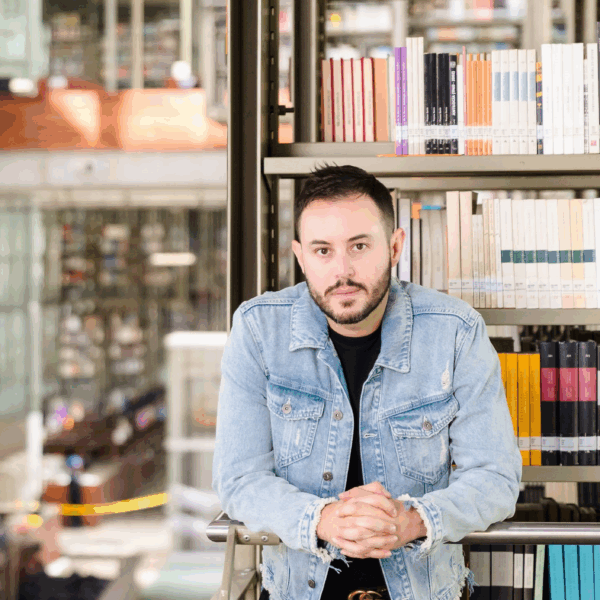
Boot Camp Graduate
Markos Felix-Martinez

Hello, Markos! First, can you tell us a bit about yourself and your personal connection to preserving historic and cultural places?
I’ve always been a person who’s into nostalgia of any kind and inspired by things from the past. Growing up, I was very drawn to the 1950s through 1970s, partly because of my dad. My dad always talked about how he moved to the United States from Mexico during the golden era of music and cinema and cars, which was the ‘50s and ‘60s. As kids, he would take us to car shows and he listened to K-EARTH 101. We grew up in Downey and as we drove around, he would point out the architecture around the city. Downey really hit its peak during the ‘50s and ‘60s with the aerospace industry, which was big in the area. The Apollo Space program was actually created in Downey. The aerospace industry had a huge economic impact on the city—everyone had well-paying jobs, and many of the city’s houses were built during that era with a lot of Jetsons style, Space Age, Googie influence in the architecture.
Then, I went off to college and moved away from Downey. Cut to 2019, I ended up moving back to the city. It was my first time living in Downey in almost 20 years and a lot of the buildings I had grown up with and loved were gone. I remember thinking, “Oh my gosh, what happened to this place or that spot?” All of these iconic homes that I was in love with as a kid were gone. That’s when I decided to get involved. I reached out to the Downey Conservancy and the Downey Historical Society, and it was like falling in love all over again. I saw photos of all these buildings that only lived in my childhood memories, and I decided to be more proactive. I also had more time to get involved because it was 2020 by this point and I was working from home.
Downey’s demographic has shifted significantly since I was a kid. It’s now a mostly affluent Latino community. When the aerospace industry left, it created a vacuum of opportunity, and many of the city’s beautiful, large-lot homes were left behind. As new residents moved in—often unaware of the city’s history and the architectural significance of these homes—many began remodeling without that context. I’ve been an interior designer for the past 16 years, so I naturally have an eye for this kind of work, and I often collaborate with architects and landscape designers in my profession. As a first-generation Mexican American with a background in design and connection to Downey’s history, I wanted to help bridge the gap between the city’s past and present. That’s what I’ve truly enjoyed through my work with the Downey Conservancy and the Downey Historical Society—helping connect today’s Latino community with Downey’s rich architectural and historical heritage.
What do you love about Downey? Share some of your favorite spots in the neighborhood or what makes your community unique.
My love for Downey has always been the architecture. Even though a lot of it is gone now, the city did help save some iconic buildings. The oldest McDonald’s still in operation is located in Downey, and it was the third-ever McDonald’s built. It’s still intact in its original condition, and the L.A. Conservancy and Downey Historical Society helped save it back in the early ‘90s.
I also love the musical acts that have come out of Downey, like the Carpenters. I recently learned that the famous 1960s surf song “Pipeline” by The Chantays was recorded in Downey, less than 500 feet away from where my parents live.
What led you to participate in the Conservancy’s Community Leadership Boot Camp? How did you find out about it?
I had been following the Conservancy for quite some time. When I was in my early 20s, I had a friend who lived in downtown L.A. who took me to a Last Remaining Seats event in 2006 or 2007. The L.A. Conservancy was doing a survey of L.A. at the time, and they were promoting other events related to the survey at the film screening. Through that event, I went to a lecture the Conservancy held in East L.A. and a tour of Victorian homes in Boyle Heights. That tour left a lasting impression on me. Then, I started following the Conservancy on social media around the time I moved back to Downey. I saw that Boot Camp applications were open for the next class, and it felt like a perfect fit with the work I was doing in Downey. I knew I wanted to know more about preservation and what else I can do in my community, so I applied for the program in 2023.
What have been your biggest takeaways or most valuable lessons from the program?
The biggest lesson that I learned is that significant places and historic sites aren’t always about the architecture. The architecture is what I naturally gravitated towards because of my major and career and saving that architecture has always been important to me. Through the Boot Camp program, I learned how preservation is more than architecture—the cultural significance plays a huge part. Sometimes these places aren’t as architecturally unique as a Victorian home, but something very important happened there culturally. When I realized that, I began thinking of the cultural significance as the soul of the building—the role it played in an important time in history, who had lived there in the past and what they accomplished. That’s something that wasn’t on my radar until the Boot Camp program. I began seeing this work through that lens and now when I help with the Downey Conservancy and Downey Historical Society, I’m working to tell the full story of a place, not just the architecture of the location.
I’m a board member of the Downey Conservancy, and we work closely with Adrian and the L.A. Conservancy. Anytime we have an urgent issue or last-minute emergency, we can turn to the Conservancy for resources. None of us at the Downey Conservancy have a background in historic preservation—we all do it because it’s our passion, and the L.A. Conservancy has been an incredible asset to us. I’ve actually been urging my fellow board members to take part in the Boot Camp program because I believe anyone who takes part in it will walk away with such great insights and resources. I’m so appreciative of the Conservancy and everything they’ve taught me along the way.
Did the Community Leadership Boot Camp program prepare you for any challenges one might face in community-led preservation?
Yes, there were mock scenarios where we broke into groups and practiced presenting a case to a decision-maker, which was incredibly helpful. They taught me how to communicate effectively in public hearings and find common ground with the people you’re addressing. I’ve always been so passionate about preservation, and before the Boot Camp program, I pictured it like the “save the clock tower” scene from Back to the Future. When you hear talk of demolition or a wrecking ball, it’s hard not to react that way. But through the Boot Camp program, I learned to approach these situations more strategically—how to persuade without sounding hostile or aggressive, so people don’t immediately shut you down. I realized it’s not about how loud you yell—it’s about how well you make your case.
Are there any current preservation efforts the Downey Conservancy is working on that you’d like our members to know about?
We’re currently working on getting a citywide survey taken to help with future preservation efforts. Having a survey that documents the historical significance of buildings will be key in moving future efforts forward. We’re trying to secure funding for the survey through the city, but if that’s not possible, we’ll try to do it on our own with volunteer support. I’m also focused on raising awareness about other preservation tools, like the Mills Act, and exploring alternative approaches, since the city has been hesitant to adopt formal ordinances or designate a Historic Preservation Zone. They don’t want to limit homeowners in what they can do with their properties, so we’re taking baby steps. We know we won’t get everything we want right away, but finding common ground will go a long way in protecting Downey’s historic buildings in the future.
What’s one piece of wisdom or encouragement you’d like to share with someone considering participating in our Community Leadership Boot Camp?
Everyone in our class really helped inspire and motivate each other, and it was a great community. What stood out most about the program to me was the diversity of the people in my class—we came from all kinds of backgrounds and careers, many of which had nothing to do with preservation. I remember one person in my class worked for a developer, and hearing his perspective on certain issues helped me understand how to engage with people I might have once seen as the opposition. Seeing how everyone approached communication, especially those from fields like finance or even development, was really eye-opening.
